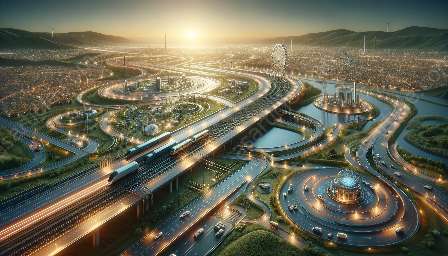Mass transit policy plays a significant role in shaping the development, implementation, and operation of public transportation systems, impacting infrastructure, technology, and urban planning. This article explores the intricacies of mass transit policy and its synergies with mass transit engineering and transport engineering, highlighting the key considerations, challenges, and opportunities in this domain.
The Significance of Mass Transit Policy
Mass transit policy encompasses a wide range of regulations, strategies, and decision-making processes that govern the operation, funding, and expansion of public transportation networks. This policy framework greatly influences the accessibility, affordability, and sustainability of mass transit systems, directly impacting urban mobility, environmental sustainability, and social equity.
Relationship with Mass Transit Engineering
Mass transit engineering is deeply intertwined with mass transit policy, as it involves the design, construction, and maintenance of transit infrastructure, vehicles, and related systems. Policy directives and funding mechanisms directly affect the priorities, standards, and scope of mass transit engineering projects, directing investments towards improving safety, efficiency, and accessibility for passengers.
Intersection with Transport Engineering
Transport engineering encompasses a broader perspective, focusing on the design and management of transportation systems across various modes, including road, rail, air, and water. Mass transit policy interfaces with transport engineering by influencing intermodal connectivity, multimodal integration, and the optimization of transportation networks for seamless passenger and freight movements.
Principles of Effective Mass Transit Policy
Effective mass transit policy is grounded in several key principles:
- Accessibility and Inclusivity: Prioritizing the needs of diverse populations, including seniors, individuals with disabilities, and low-income communities, to ensure equitable access to public transportation.
- Sustainability: Promoting environmentally friendly practices, such as electrification, renewable energy use, and emission reduction strategies, to mitigate the environmental impact of mass transit operations.
- Integration and Efficiency: Emphasizing seamless connections with other modes of transport, such as cycling, walking, and shared mobility services, to create an integrated and efficient transportation ecosystem.
- Technological Innovation: Leveraging advancements in digitalization, automation, and intelligent transportation systems to enhance safety, operational efficiency, and passenger experience.
- Financial Viability: Balancing fare structures, subsidy mechanisms, and public-private partnerships to ensure the economic sustainability of mass transit services and infrastructure investments.
Challenges in Crafting Effective Mass Transit Policy
Developing and implementing effective mass transit policy is fraught with various challenges, including:
- Political Complexity: Aligning diverse stakeholder interests, navigating regulatory frameworks, and securing bipartisan support for long-term transportation initiatives.
- Infrastructure Investment: Allocating adequate funding for the expansion, modernization, and maintenance of transit infrastructure in the face of competing budgetary priorities.
- Equity and Social Justice: Addressing disparities in service provision, fare affordability, and spatial accessibility to ensure that mass transit policy serves the needs of all communities.
- Transportation Demand Management: Balancing the demands of private vehicle users, public transit riders, and emerging mobility services to minimize congestion and improve overall system efficiency.
- Technological Disruption: Anticipating and adapting to rapid technological advancements, such as electrification, autonomous vehicles, and mobility-as-a-service, to align policy with emerging industry trends.
Opportunities for Future Development
The evolving landscape of mass transit policy presents several opportunities for future development and improvement:
- Smart Urban Planning: Integrating mass transit initiatives with urban development and land use policies to create vibrant, walkable, and transit-oriented communities.
- Data-Driven Decision-Making: Harnessing advanced analytics, remote sensing technologies, and real-time passenger data to optimize service planning, resource allocation, and customer engagement.
- Public-Private Collaboration: Exploring innovative financing models, public-private partnerships, and collaborative governance structures to drive investment in transformative transit projects.
- Community Engagement: Prioritizing public involvement, feedback mechanisms, and co-design processes to ensure that mass transit policy reflects the unique needs and aspirations of local communities.
- Resilience and Adaptation: Incorporating climate resilience, disaster preparedness, and adaptive strategies into mass transit policy to mitigate the impacts of extreme weather events and natural disasters.
Conclusion
Effective mass transit policy is essential for creating sustainable, integrated, and equitable transportation systems. By recognizing its interconnectedness with mass transit engineering and transport engineering, policymakers, engineers, and stakeholders can collaboratively shape a future where public transportation serves as a cornerstone of efficient, accessible, and resilient urban mobility.

